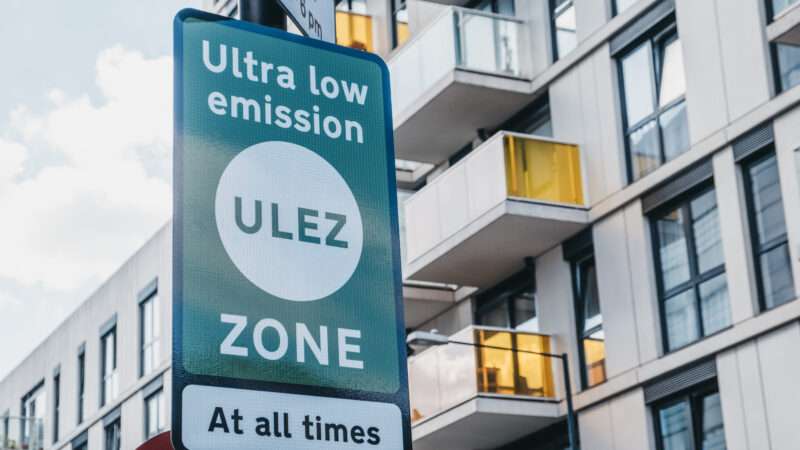
Drivers in London will now face financial penalties if their cars don't meet emissions standards. While the proposal isn't without merit, it's unlikely to make a difference even as it penalizes motorists.
In April 2019, the British capital instituted an Ultra Low Emission Zone (ULEZ) in central London. The rule required all vehicles to meet certain emissions standards. Certain vehicles, including taxis or certain historic vehicles, were exempt; for most noncompliant vehicles, drivers would face a fine of 12.50 pounds ($15.56 USD) per day. The rule is enforced by cameras that capture license plates.
Mayor Sadiq Khan's office touted the rule as "the world's toughest vehicle emissions standard." Khan referred to the city's air quality as an "invisible killer" that is "one of the biggest national health emergencies of our generation." At the time, Silviya Barrett, research manager at the Centre for London think tank, told the BBC, "The ULEZ is really needed especially to help poorer Londoners who live in urban areas with high pollution," though its effect was "limited at the moment due to its small area." It was later expanded in 2021 to cover about one-fourth of the city.
Transport for London (TfL), the city's transportation authority, expanded the ULEZ to the entire city on August 29, 2023. All noncompliant vehicles traveling within the city—including those not registered in the U.K.—will now have to pay the daily fine. Notably, the city already assesses a 15-pound ($18.69 USD) daily Congestion Charge to all motorists who drive in central London during peak hours.
The city is bullish on the proposal: In 2020, Khan's office released a report showing that at the end of the ULEZ's first 10 months, measured concentrations of nitrogen dioxide were 44 percent lower than was projected without the ULEZ, with an average compliance rate of 79 percent.
In February 2023, the office released another report, showing the results since the ULEZ expanded to cover 44 percent of the city's population. It estimated that nitrogen dioxide levels were 46 percent lower in central London, and 21 percent lower in the other covered areas, than if the ULEZ had never been implemented.
But not everyone agrees. A 2021 study by the Centre for Transport Studies at the Imperial College of London found that the reduction in nitrogen dioxide was considerably smaller, perhaps less than 3 percent. "As other cities consider implementing similar schemes," its authors concluded, "this study implies that the ULEZ on its own is not an effective strategy in the sense that the marginal causal effects were small."
In a 2022 impact assessment, the mayor's office claimed that expanding the ULEZ citywide would result in an annual savings of 214 "life years." But Channel 4, the state-owned but privately funded network, noted that spread out across London's population of 8.8 million, 214 life years means that the ULEZ adds about 13 minutes to each Londoner's life per year.
And the proposal is not universally popular with the citizenry, either: Last week, Sky News reported that Londoners had stolen or damaged ULEZ cameras more than 500 times in the last few months. In the days immediately after ULEZ went citywide, activists smashed cameras, clipped their power cables, and spray-painted the lenses.
The Imperial College study did note that while air quality did improve overall since the ULEZ was introduced, "the ULEZ is one of many policies implemented to tackle air pollution in London….Thus, reducing air pollution requires a multi-faceted set of policies that aim to reduce emissions across sectors with coordination among local, regional and national government."
Mitigating emissions that cause climate change is a noble and essential goal. Ironically, the ULEZ is one of the less intrusive solutions: Earlier this year, the European Parliament banned the sale of vehicles with internal combustion engines by 2035. The Environmental Protection Agency has proposed that two-thirds of all cars sold in the U.S. by 2032 should be electric.
A more effective and less proscriptive solution would be a more narrowly tailored system where users pay in direct proportion to their output. In a 2013 Cato Institute report, Bob Litterman wrote, "Relying on prices to allocate scarce resources is vastly superior to the command‐and‐control approaches of current policies, which rely on public subsidies and mandates to use particular alternatives to fossil fuels."
The post Cars That Don't Meet London's Emissions Standards Now Subject to Daily Fines appeared first on Reason.com.







